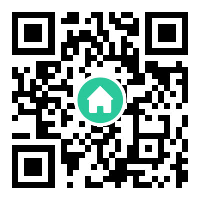Telegram app development has emerged as a pivotal area in the realm of secure and scalable messaging solutions. With over 900 million active users globally, Telegram's open API and bot platform have empowered developers to create innovative tools, ranging from chatbots to full-fledged applications. This article explores the core aspects of Telegram app development, including its API framework, security protocols, and ecosystem opportunities, while addressing the challenges and future trends in this dynamic field.
The Foundation: Telegram's API and Bot Platform
At the heart of Telegram app development lies its robust API, which supports both standard user interactions and automated bot operations. The Telegram Bot API enables developers to build chatbots capable of handling tasks like customer service, content delivery, and payment processing. For instance, businesses have leveraged bots to automate order tracking or deliver real-time news updates. Meanwhile, the Telegram Database Library (TDLib) provides a cross-platform solution for creating custom clients, allowing developers to integrate features like end-to-end encrypted chats or file-sharing systems with relative ease. The flexibility of these tools has made Telegram a preferred choice for developers prioritizing modularity and scalability.
Security-Centric Development Practices
Telegram app development inherently prioritizes security, a feature that distinguishes it from competitors. The platform's MTProto 2.0 protocol underpins its encryption model, ensuring secure data transmission even in low-bandwidth environments. Developers working on Telegram-based solutions must adhere to strict security guidelines, such as implementing two-factor authentication (2FA) for user accounts or utilizing Secret Chats for ephemeral messaging. Recent updates, like the introduction of Topics 2.0 in group chats, further demonstrate how security considerations shape feature development. However, this focus also introduces complexities, such as balancing usability with encryption overhead—a challenge that requires meticulous optimization during app design.
Open-Source Ecosystem and Community Contributions
The open-source nature of Telegram's development framework has cultivated a thriving community of contributors. Platforms like GitHub host over 3,000 repositories related to Telegram app development, ranging from Python-based bot templates to React Native UI kits. This collaborative environment accelerates innovation; for example, third-party libraries like Telethon and Pyrogram have simplified bot creation for Python developers. Moreover, Telegram's contest programs, such as the $1 million Blockchain Challenge, incentivize developers to build decentralized applications (DApps) on the TON (The Open Network) blockchain. These initiatives not only expand Telegram's functionality but also position it as a hub for experimental tech projects.
Challenges in Cross-Platform Integration
Despite its advantages, Telegram app development faces hurdles in cross-platform compatibility. While TDLib theoretically supports iOS, Android, and desktop environments, developers often encounter inconsistencies in feature parity across operating systems. The recent introduction of Telegram WebK, a WebAssembly-based web client, exemplifies efforts to bridge these gaps. Another persistent challenge involves API rate limits—Telegram imposes a cap of 30 messages per second for bots, requiring developers to implement sophisticated queue management systems. Additionally, regional restrictions in markets like Iran or China necessitate the integration of proxy support within apps, adding layers of complexity to deployment strategies.
Future Trends: AI and Decentralized Features
The evolution of Telegram app development increasingly intersects with emerging technologies. AI-powered bots capable of natural language processing (NLP) are gaining traction, with developers integrating frameworks like GPT-4 to create intelligent assistants. Telegram's recent partnership with Wallet Pay for cryptocurrency transactions signals a push toward decentralized finance (DeFi) integrations. Looking ahead, the platform's roadmap suggests deeper blockchain integration, potentially enabling tokenized communities and smart contract automation. These advancements will likely redefine Telegram's role from a messaging app to a comprehensive ecosystem for Web3 development, presenting new opportunities for developers to pioneer next-gen digital experiences.
As Telegram app development continues to evolve, its combination of security, flexibility, and community-driven innovation positions it as a leader in the messaging-as-a-platform space. Developers entering this field must navigate technical complexities while embracing emerging trends like AI and blockchain integration. With Telegram's user base projected to surpass 1 billion by 2026, the platform offers unparalleled opportunities for creating impactful, privacy-focused applications in an increasingly connected world.













